While Kyoto boasts numerous temples, iconic sites like Kiyomizu-dera Temple and Golden Pavilion have huge crowds. However, nestled in Kyoto’s downtown, Kennin-ji Temple stands as a serene oasis. Here, amidst the bustling streets, visitors can immerse themselves in the tranquility of this Zen temple.
As you stroll south on Hanamikoji-dori, Gion’s main street renowned for its enchanting maiko district with Kyoto ambiance, you will encounter the gate of Kennin-ji Temple. Stepping through this gate, you are instantly transported to a Zen world.
Kennin-ji Temple, the oldest Zen temple in Kyoto, was founded in 1202 by Eisai (栄西 1141-1215). He was an elite monk, who traveled to China twice to pursue Buddhism. He brought back to Japan Zen and tea, and popularized them. It is safe to say that the modern boom of Zen and tea culture owes much to his endeavors.
This time, I’ll take you on a journey to Kennin-ji, a temple with a rich history of Zen and tea!
•The Wind and Thunder Gods (風神雷神図屏風) [National Treasure]
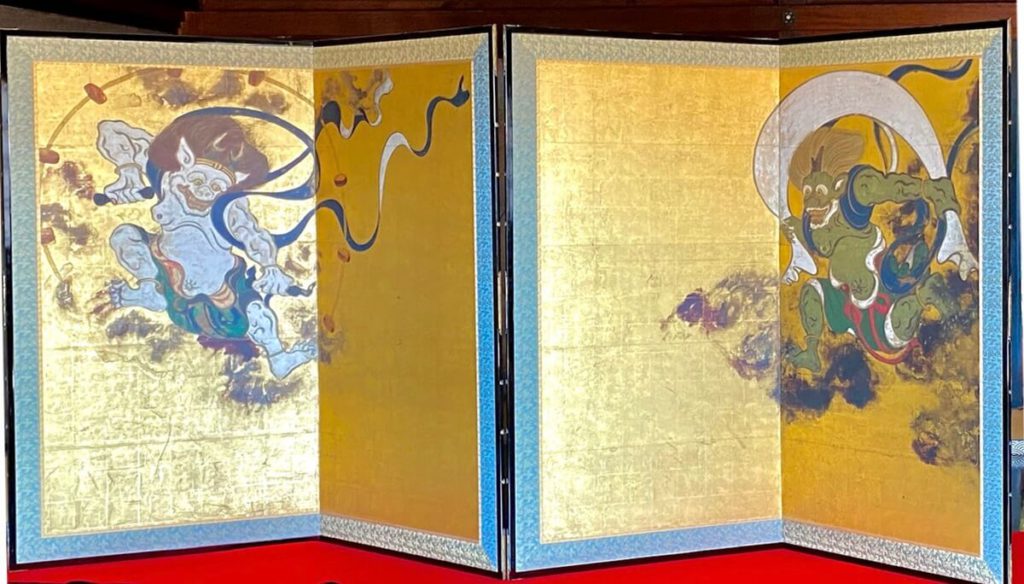
The first thing that catches the eye upon entering the building is a folding screen depicting the Wind and Thunder Gods, a symbolic work of Kennin-ji. It is considered to be the masterpiece of Tawaraya Sotatsu (俵屋宗達, 1570?-1643), a painter of the Edo period. Although the original is kept in the Kyoto National Museum for preservation, it has been reproduced using the latest high-definition digital technology and possesses the same vigor and power as the original.
• Twin Dragons (双龍図)
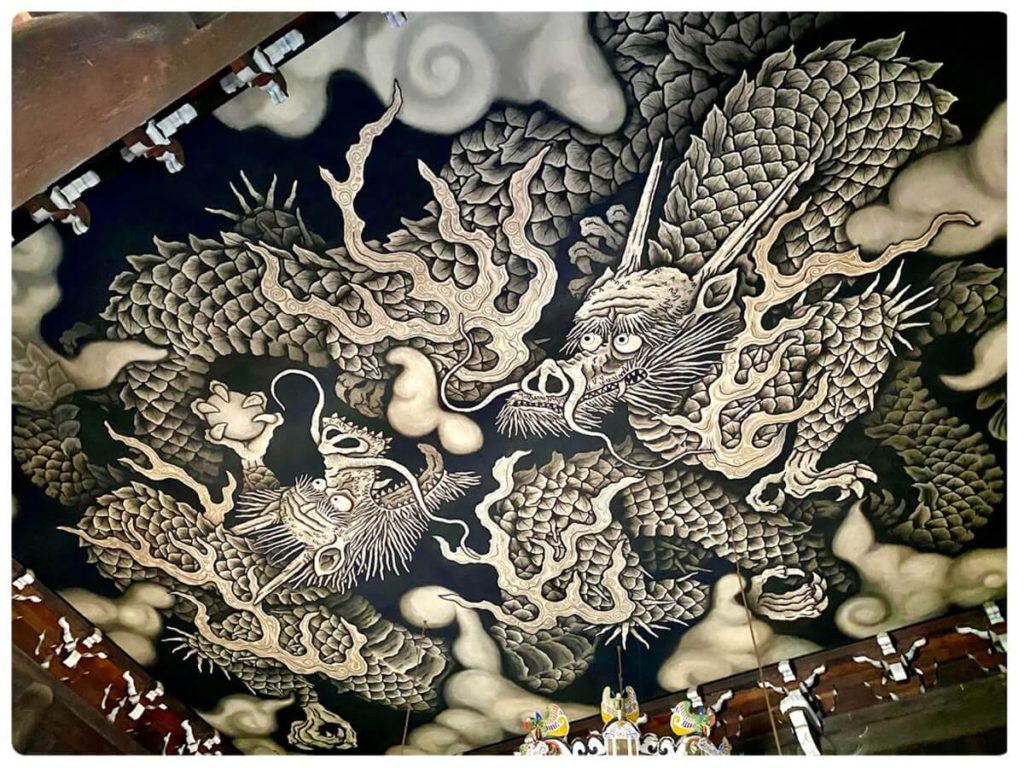
Entering the Hatto Hall (法堂), where the main statue of Shakyamuni Buddha is enshrined, you will be overwhelmed by the power of the two dragons painted in ink on the ceiling. It took Koizumi Junsaku (小泉淳作 1924-2012) two years to paint this large-scale work (11.4m×15.8m) to commemorate the 800th anniversary of the founding of Kennin-ji in 2002.
• Fusuma-e (襖絵, paintings on sliding doors)
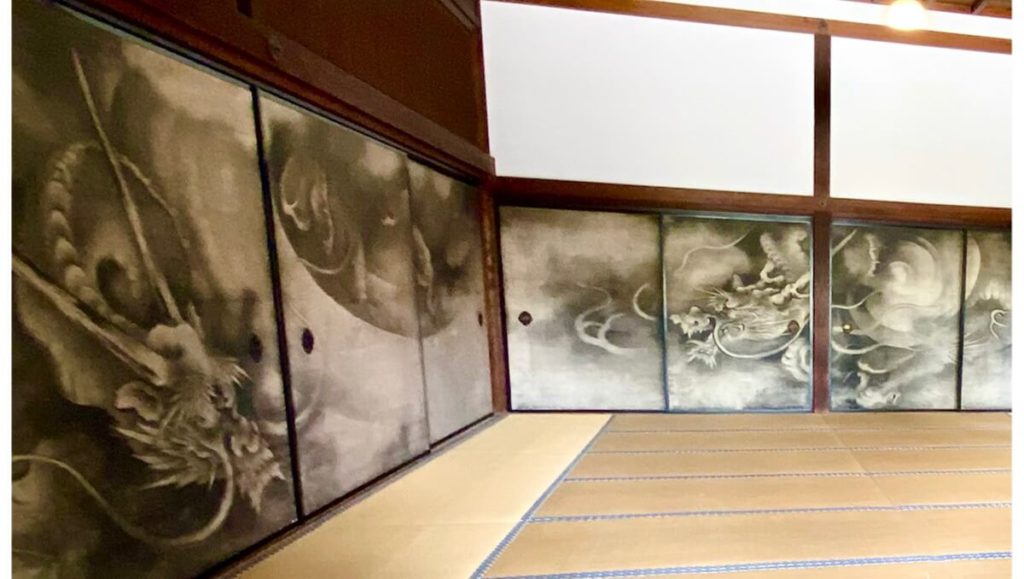
The fusuma paintings in each room are just like those in a museum, and among them, “Cloud Dragon” painted by Kaiho Yusho (海北友松 1533-1615) is particularly impressive. The dragons, depicted with such force, roaring and glaring, seem as though they could leap out from the fusuma painting at any moment.
<Trivia1: Why are there dragons in temples?>
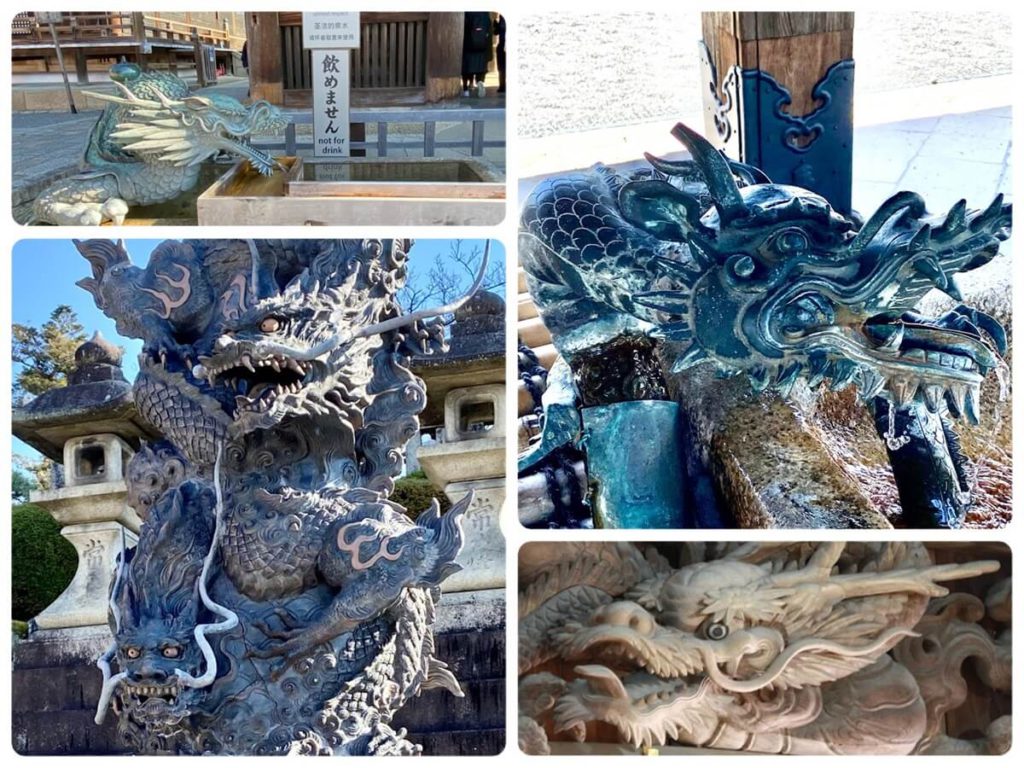
Not only at Kennin-ji Temple, but also at other temples, especially Zen temples, you can see paintings of dragons on ceilings and sliding doors. You might also frequently encounter dragon figurines.
Dragons are mythical creatures, but they are regarded as “protectors of Buddhism” and also as “water deities” who safeguard temples from fires.
Also dragons in Shinto shrines symbolize success and prosperity, often seen as water deities in temizusya (手水舎, a place where there is a water basin for purification) and elsewhere.
• ◯△⬜︎Garden
The name of this garden is quite unique: “◯△⬜︎乃庭,” which reads “Maru sankaku shikaku no niwa, meaning a garden of circle, triangle and square. Now here is a trivia quiz!
<Trivia2: Where are the circle ◯, triangle △, and square ⬜︎ in this garden?>

Were you able to find all three? The square ⬜︎ is the well on the left of the photo, and the circle ◯ is the moss in the center. And the triangle △ is a bit hard to find. The answer is at the end of this article. Please go to the temple and see them in person.
The square well represents “earth” and the round moss represents “water.” The white sand on the right side of the photo is triangular and is supposed to resemble “fire.” The Zen philosophy behind the “circle, triangle, square” is that all things in this universe are represented by these forms. It seems I am not enlightened enough to understand the philosophy of Zen.
• Cho-on-tei Garden (潮音庭)
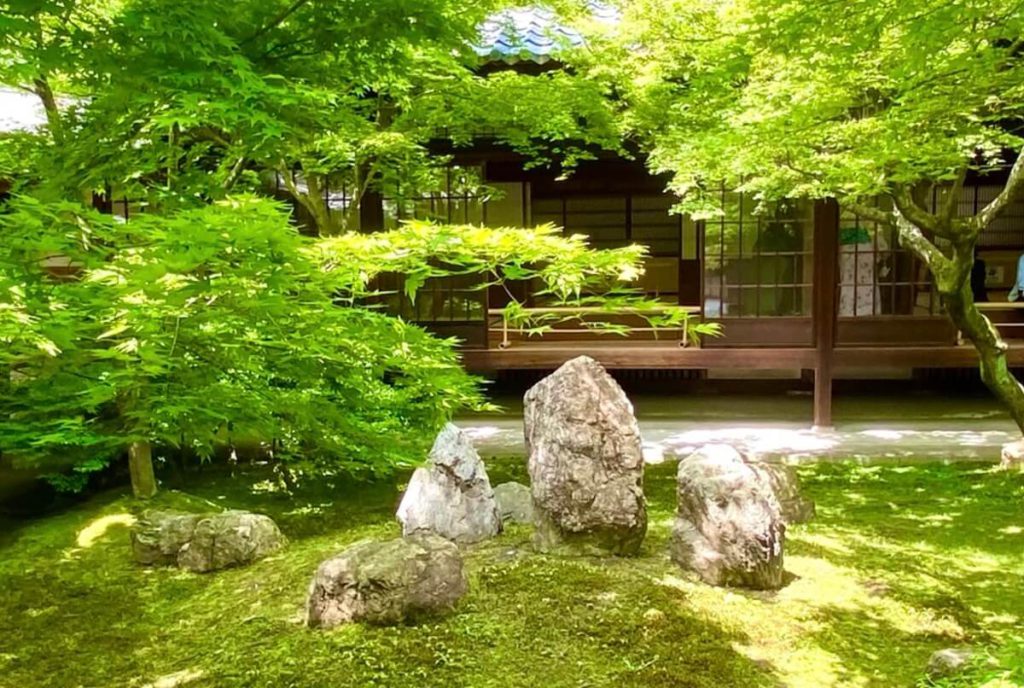
There is a set of three stones that represent Budda and two Zen monks in the center of the garden. This Zen garden is designed to be viewed from 360°.
• Daioen Garden (大雄苑)
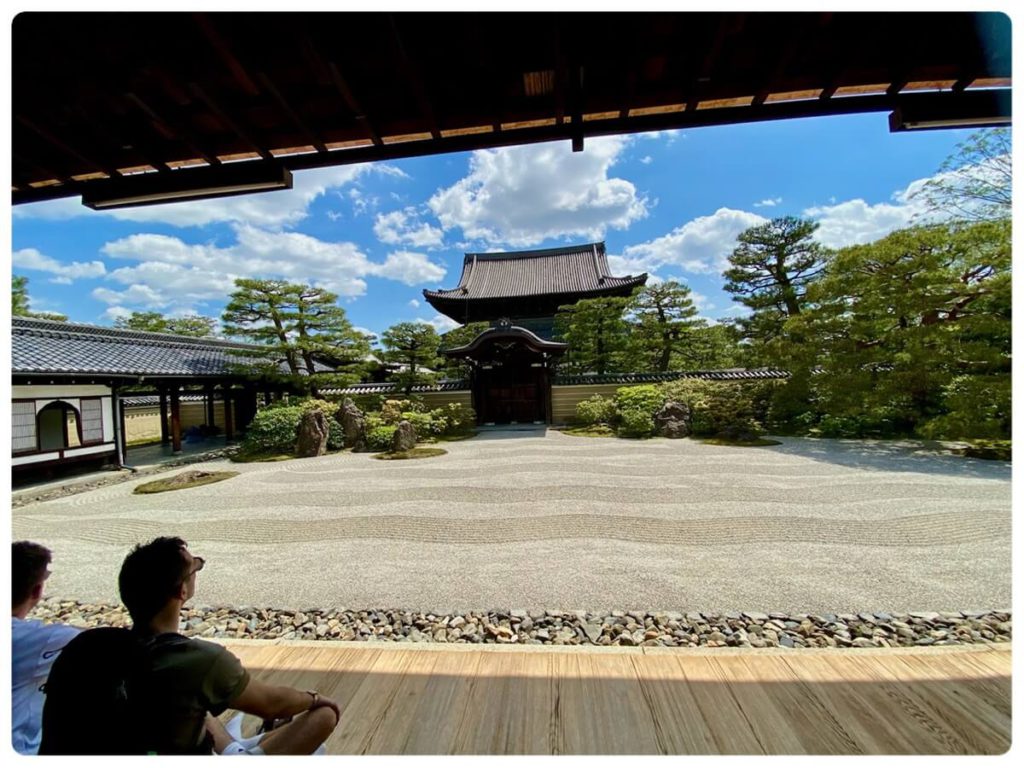
The garden in front of the hojo (方丈) is a dry landscape garden (枯山水, Kare-sansui) known as Daioen. Dry gardens are commonly found in Zen temples, and the one at Kennin-ji is particularly grand and expansive. Just take a moment to meditate here!
• Experience
Kennin-ji Temple offers zazen (座禅) and shakyo (写経, sutra copying) experiences as follows. Reservations are not required. If you have time, why not try them?

<Zazen Experience>
Dates: Second Sunday of every month (Closed in August)
Time: 7:30 a.m. – 9:30 a.m. [Zazen 20 min. x 2 times]
Free of charge
In July, it’s held from Friday to Sunday of the second week, starting at 6:30 a.m.
<Shakyo Experience>
Time required: approx. 60 min.
Hours: 10:00 a.m. – 3:00 p.m.
Fee: 1,000 yen
• Tea monument (茶碑)

As mentioned at the beginning of this article, Eisai, the founder of Kennin-ji, was the first person to bring back tea seeds from China.
It is thought that tea was introduced to our country as early as the Nara period (710-784). Moving forward to the Heian period (794-1185), the custom of tea drinking was favored among the aristocracy and monks. Eisai’s achievement was to spread the consumption of tea from a few privileged upper-class societies to the general public. For this reason, he is also known as the “founder of tea,” and a tea monument stands on the grounds. Behind it is a tea garden planted and cultivated to commemorate the 800th anniversary of tea.
<Trivia3: What kind of trees are these?>
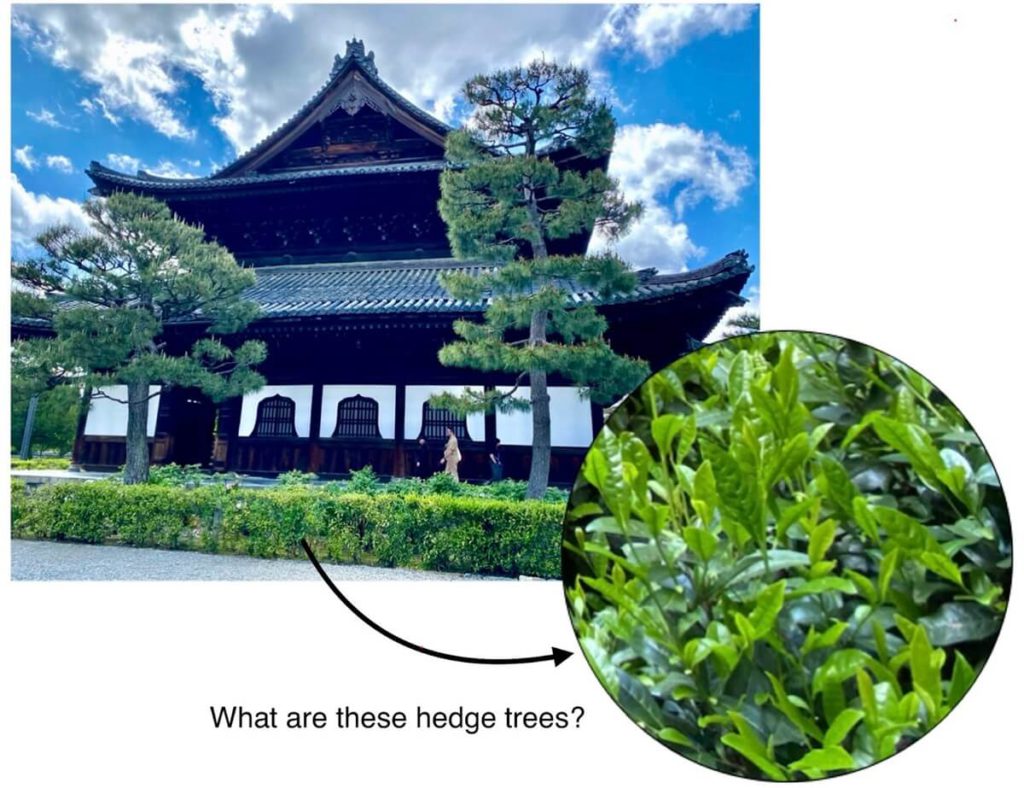
They are tea trees. Tea trees are planted throughout the grounds of Kennin-ji Temple.
Nowadays, tea is an essential part of Japanese daily life as a beverage, but at the time Eisai brought back tea from China, it was introduced to Japan as a “medicine.” In his book, Eisai stated, “Tea is a medicine to keep the body healthy and prolong life.” Eisai also incorporated tea into Zen practice, and before sitting for meditation, he held a tea ritual in which tea was served as a medicine to awaken the mind from sleep. The tea ceremony was derived from this tea ritual.
Looking at it this way, you can see that Kennin-ji, the oldest Zen temple in Kyoto, is the birthplace of the tea-drinking custom, the tea ceremony, and tea culture, as well as Zen culture. Both cultures have spread throughout the world today, 800 years later. Could Eisai have imagined this?
When you visit Kyoto, please immerse yourself in the world of Zen and tea at Kennin-ji Temple, reflecting on Eisai.
Answer to Trivia 2
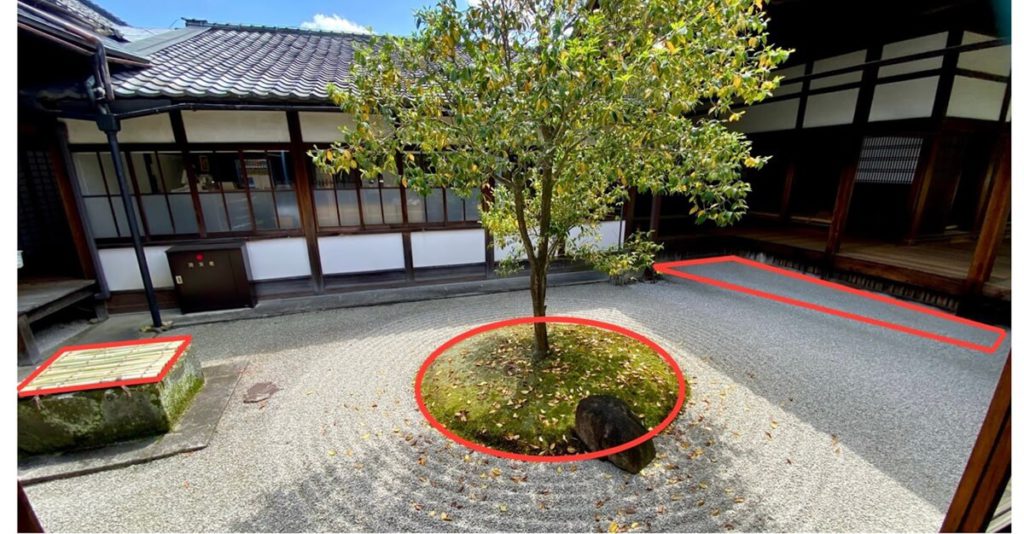
This is my previous blog about the Gion area, where Kennin-ji is located. In May 2024, the Gion Museum opened on the grounds of the Gion Koubu Kaburenjo Theater. There, various items related to maiko and geiko (geisha) are on display, and visitors can also take photos with them and watch their dancing. I am linking it here again with some updates. Please take a look. →Strolling around Gion (祇園)
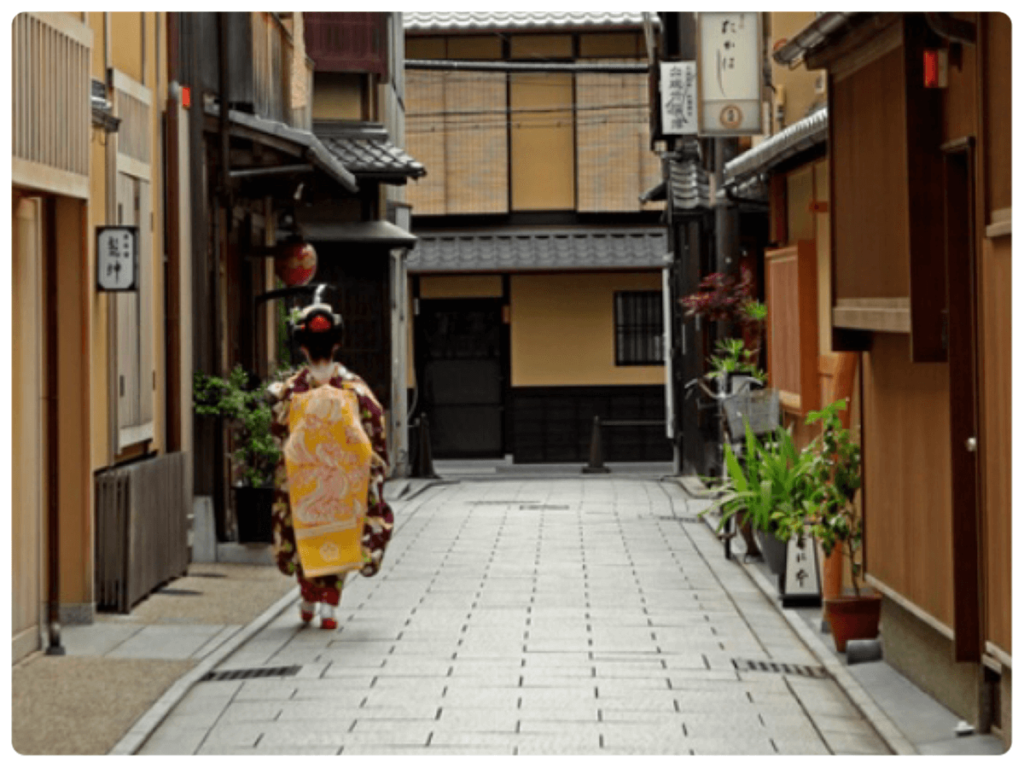
Born and raised in Kyoto. A private tutor and a volunteer tour guide in Kyoto. Love sewing, kimono remaking, traveling, cooking, gardening, playing the shamisen(三味線), making stained glass and grandparenting as well.


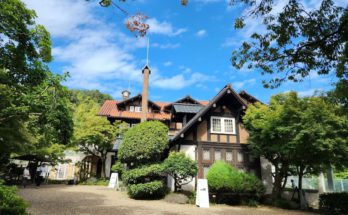

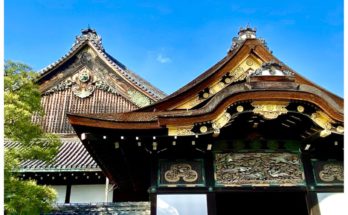
 HTJ has a YouTube page! Check it out
HTJ has a YouTube page! Check it out
潮音庭、I really like the garden,surrounded by corridors and verandas.
The green and rocks!
Thank you for your comment, Masayo-san!
I also enjoy Choontei garden, especially in autumn. The color contrast between the red autumn leaves and the green moss is truly exceptional, don’t you think?
Rieko san,
great article! The way you combined the history and cultural importance was super engaging. Liked your comment “ Please go to the temple and see them in person.” 😎 I want to see ◯△⬜︎乃庭 Garden in person!
Great work!
Hi Irena,
Thank you for your comment!
Seeing is believing, right?
I’m glad the article made you want to see the ◯△□ garden in person!
I’ll take you to Kennin-ji temple next time you visit Kyoto!
Rieko, another fascinating fact-filled entry in your wonderful blog! I am always interested in the different styles of nihon no teien. Tea is such an integral part of the Japanese culture! Thank you for sharing your knowledge with the world.
Thank you for the comment, Cindy!
The temple has several Japanese gardens, including a dry landscape garden and a moss garden, which are enough for garden lovers like you to enjoy.
I would like to take you there next time you come to Japan!